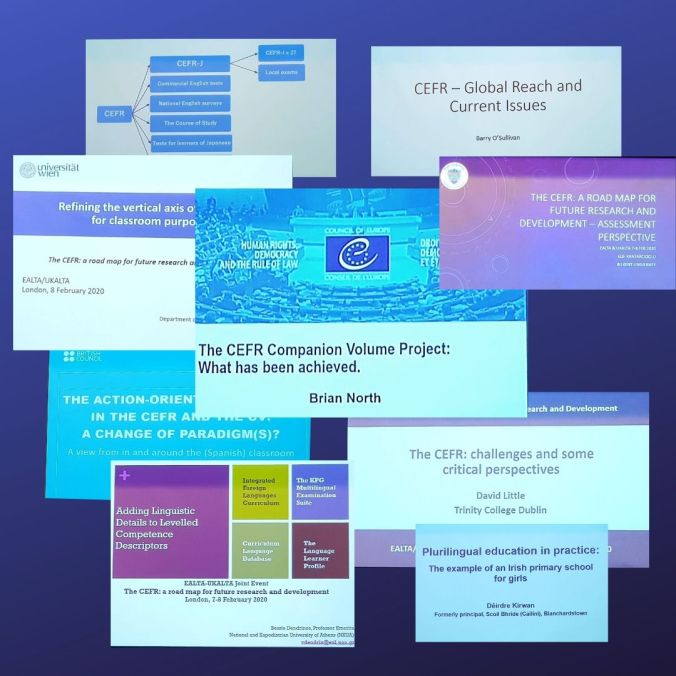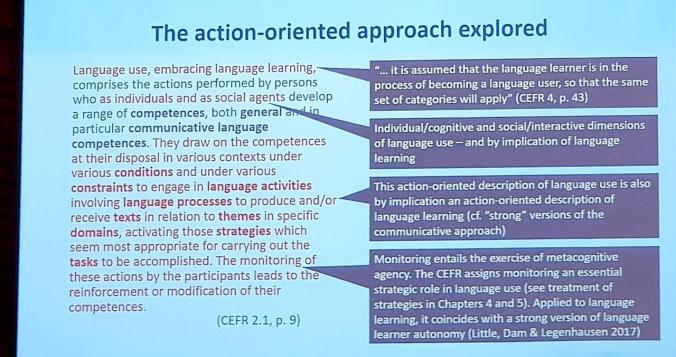
My first attempt to use CEFR happened back in 1998, when I was in my fifth year at uni: one of the teachers brought the self-assessment grid to us, near-graduates. Of course, everyone put themselves at the top of the scale 🙂 Only six years later, on an in-service teacher training course at Moscow Linguistic University, I found out about the descriptors, the portfolio, and most importantly, about the ethos of the European Language Portfolio.
From my own (admittedly simplistic) perspective, the Common European Framework of Reference for languages as part of The European Language Portfolio has two very important functions:
- It shows that people who speak very different languages want to talk about the same things.
- It can give a great sense of progress to learners (and teachers) of languages.
This February, more than 20 years later, imagine me sitting in the very centre of London and hearing from all these amazing experts first-hand how CEFR has grown and evolved over time! Feeling lucky? Yes, and also happy that in spite of all the changes CEFR is still about the same: the sense of unity and the sense of progress.
The updated and improved descriptors describe what we ‘can do’ more precisely; the addition of sign language makes CEFR even more unifying and inclusive; plurilingualism and mediation finally acknowledge what a person speaking several languages actually does when communicating. And, of course, we have official CEFR updates for young learners – how cool is that?
What does that mean for an English teacher? Exciting times ahead 🙂 Now that the updates (the CEFR Companion Volume) are out, there will be more and more new coursebooks, resources, curricula and research opportunities.

That said, there is a lot we can do even now, before all these changes trickle down to classrooms:
- Consider how you can foster a plurilingual atmosphere in the classroom. If students want to use L1, encourage translanguaging, mediation, exchange of different L1 (if you’re lucky to work in a multilingual environment). CEFR can help you make plurilingual skills part of your learning objectives – after all, research shows that it gives great cognitive benefits, so why should your learners miss out?
- When teaching pronunciation, look at the new phonology scale: isn’t it great how it acknowledges accents at all levels and encourages focus on intelligibility?
- If English is not your first language, check out the changes in C2 descriptors: perhaps there is something that can become your own learning goal? English means a lot to me on many levels, but it’s also my work instrument, which I like to keep sharp 🙂
- The whole Companion Volume is a long read at whopping 235 pages, but you can open it to any random page and find real gems. For example:
- descriptors for online interaction p.97 are great for justifying all the time you spent on edutech 😉
- descriptors for online collaboration p.99 can be useful for planning a professional skills course
- descriptors for describing data p.110 can help with IELTS preparation
There’s much more of course, so let’s start using the good old CEFR in new ways! This is what it is meant to be: not a prescriptive set of requirements, but a tool to use and adapt to our contexts, learners and their needs.
P.S. You can read my previous posts in the series about this event here: 1 2 3.























